Green architecture – UC Davis Student Community Center
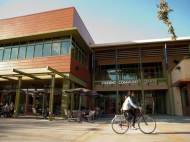 The University of California recently set a minimum requirement that all new buildings meet standards equivalent to LEED Silver certification. New buildings are also required to be at least 20 percent more energy efficient than California code requirements. But the Davis campus has set their bar even higher – new buildings on the campus should be at least 25 percent more energy efficient than California’s energy code requirements.
The University of California recently set a minimum requirement that all new buildings meet standards equivalent to LEED Silver certification. New buildings are also required to be at least 20 percent more energy efficient than California code requirements. But the Davis campus has set their bar even higher – new buildings on the campus should be at least 25 percent more energy efficient than California’s energy code requirements.
Designed by BAR Architects of San Francisco, the 4,087 square-meter (44,000 square-foot) building of Student Community Center at the University of California, Davis, managed to surpass the requirements and achieved LEED Platinum certification. MFDB Architects of Sacramento was the architect of record, and it was constructed by Flintco Pacific Construction of Roseville.
Sited at a significant campus intersection, the project is designed as a two-story building organized around a double-height lobby, study lounge and community “living room”. The three primary student organizations are located on the first floor, each having prominent exterior corner windows that identify the organizations and encourage students to participate in their activities.
The new SCC provides much needed academic support and community space for UC Davis students including activity, administration and support spaces for several student organizations. The building provides late-night study spaces, a media center, multi-purpose and meeting rooms, as well as a cafe.
“The project met the high standards of the LEED Platinum designation without using rare or complex technologies — just smart, thoughtful design using the best practices of today”, said Clayton Halliday, UC Davis campus architect. “But taken together, they make a big impact on the building’s overall sustainability.”
For example, sustainable design measures have made the building 32 percent more energy-efficient than California building code requirements. More than 96 percent of construction waste was recycled or otherwise diverted from landfills. Large skylights send a flood of natural light into the lobby of the Student Community Center, thus lowering the need for artificial lighting. Operable windows allow natural ventilation.
Drought-tolerant vegetation is planted in order to lower the water consumption meant for irrigation. The landscaping includes pervious paving and a bioswale to filter storm drainage. Low-flow water fixtures aim to further lower water consumption, and “hydration stations” aim to reduce plastic bottle use.
High-efficiency lighting fixtures, selected with input from the UC Davis California Lighting Technology Center. The fixtures minimize artificial lighting when natural light is sufficient. While solar panels are not installed on the Student Community Center itself, a portion of the renewable energy produced by solar panels at a south campus parking lot is earmarked for the center.
The center’s CoHo South café composts and recycles its food and food packaging. It is run by the Associated Students, University of California, Davis, which helped to create a composting program for the building.
During construction, students from the campus Waste Reduction and Recycling program developed a job-site composting program that trained construction crews to compost. The builders also donated scrap materials to the university’s student-run Aggie ReUse Store, which sells used and re-purposed goods.

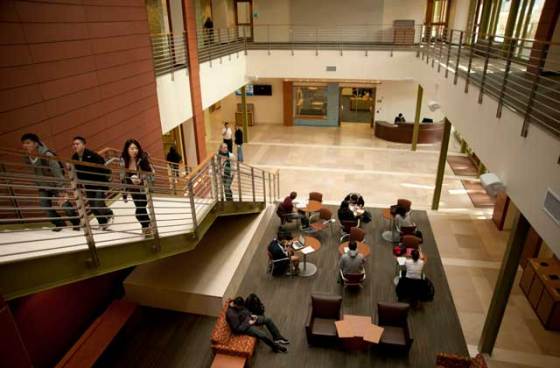
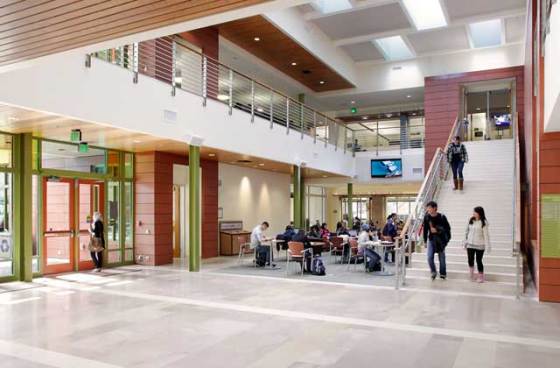
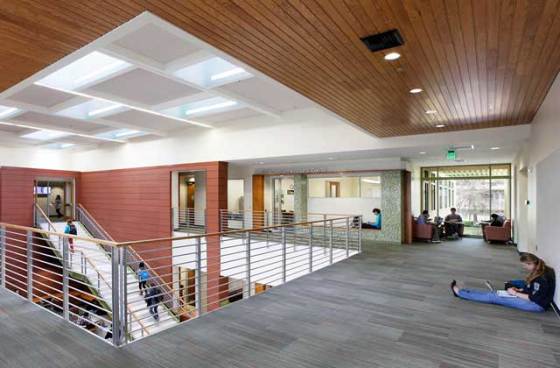
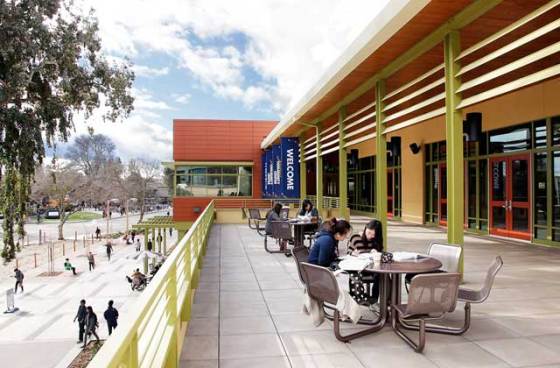








It looks light and warm – the right combination for its purpose.
Well done!